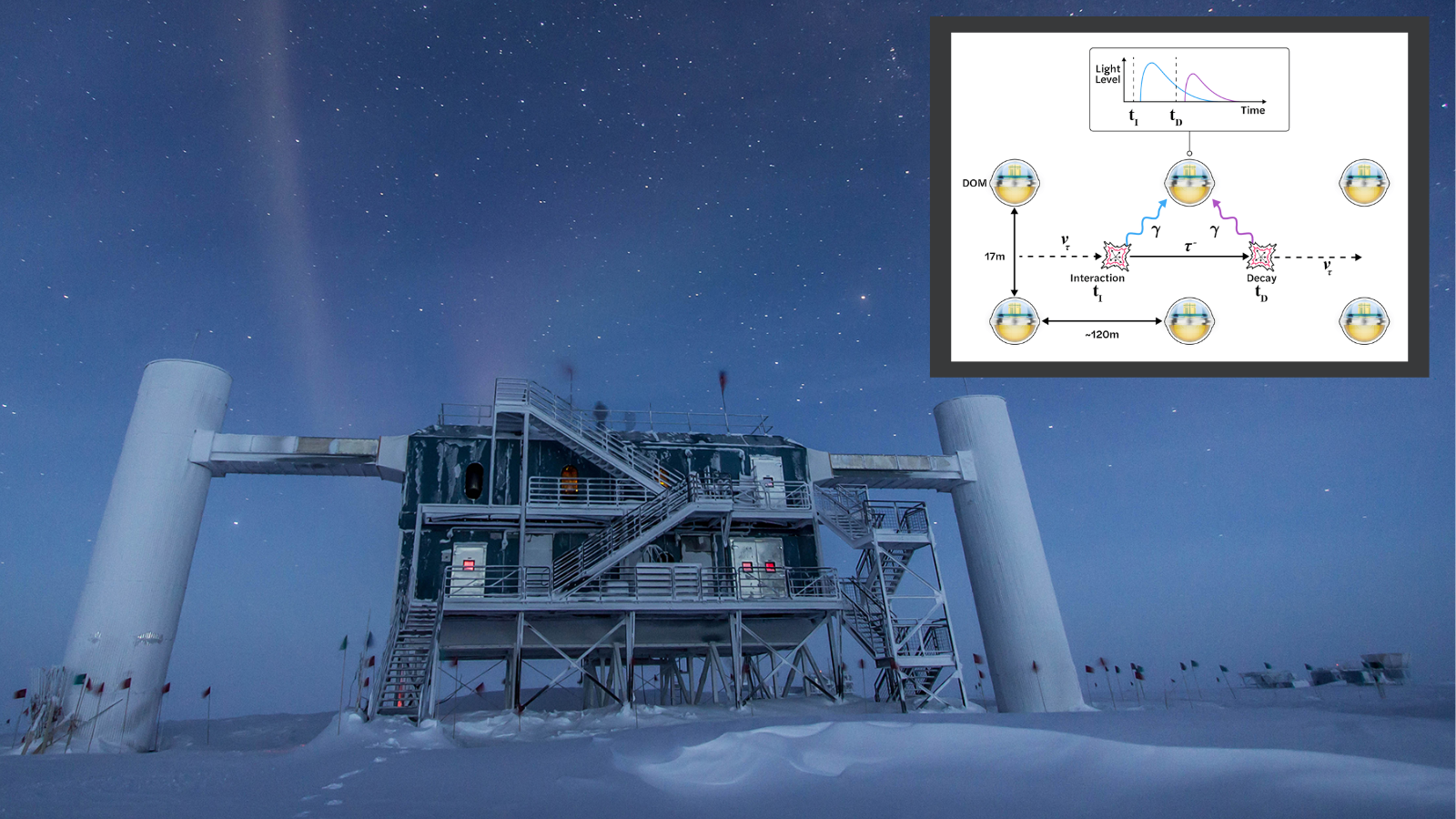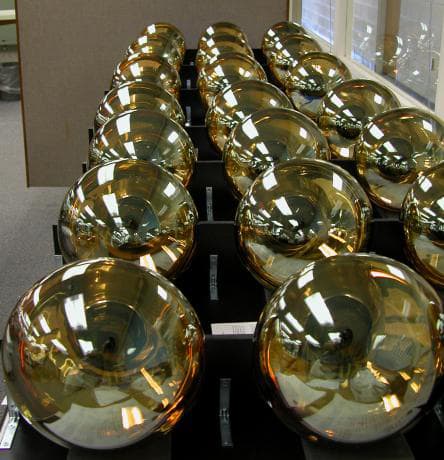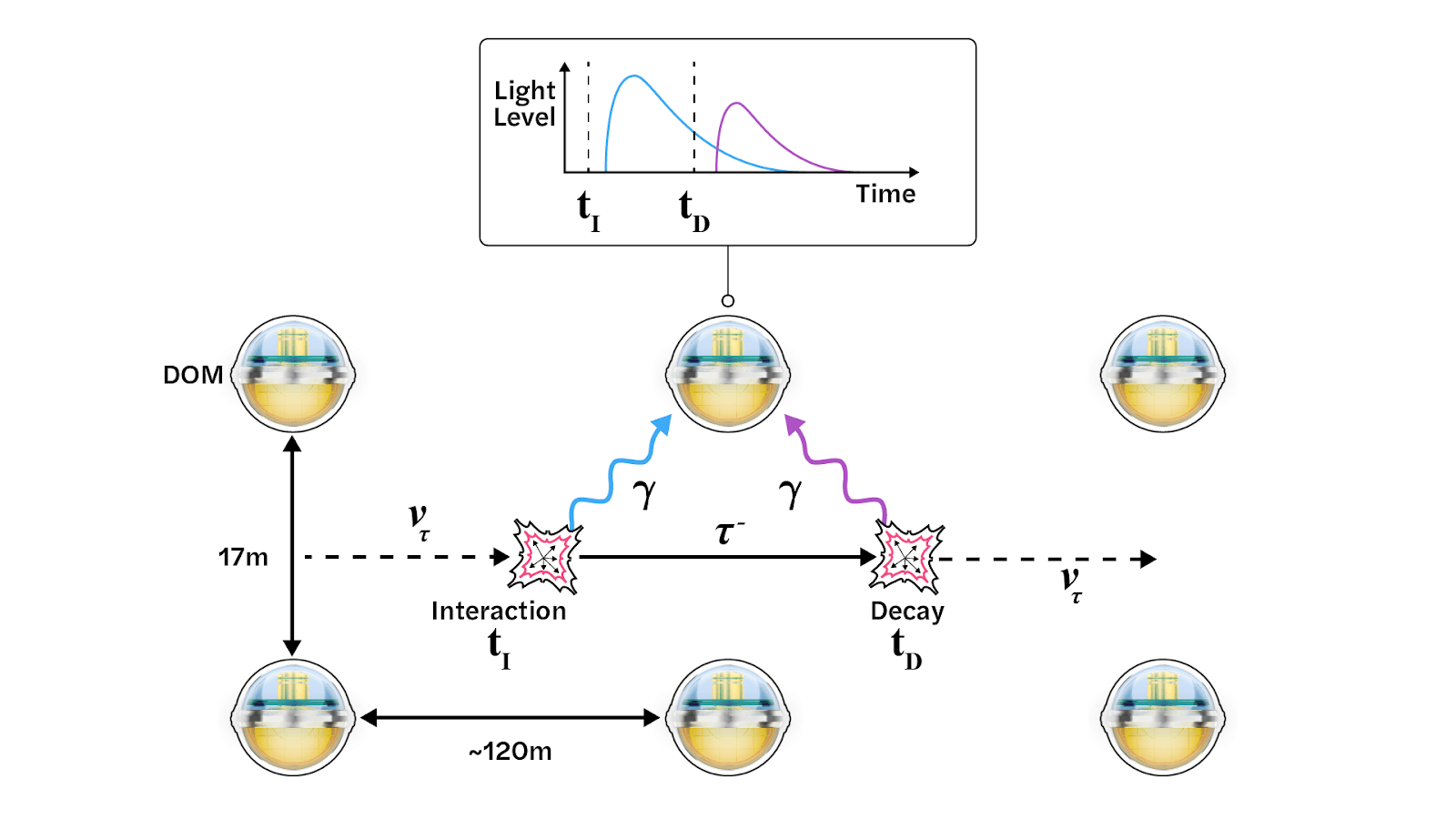Scientists may have just caught 7 exotic 'ghost particles' as they pierced through Earth
Devices buried deep within the south pole detected highly elusive tau neutrinos blasted toward Earth by powerful astrophysical events.

Astronomers using the IceCube observatory, which is buried deep within the ice of the south pole, have detected seven elusive and exotic "ghost particle" candidates as they streamed through Earth. The signals suggest these particles are astrophysical tau neutrinos; they act as important messengers between powerful, high-energy celestial events and us.
Neutrinos are charge-less and nearly mass-less particles that blast through the cosmos at speeds approaching that of light. Oddly enough, because of those parameters, neutrinos barely interact with anything. In fact, around 100 trillion of them pass through our bodies every second. We just can't tell. If you were a human-size neutrino detector, you would have to wait about 100 years for a neutrino to interact with a particle in your body. It is thus for good reason that neutrinos are nicknamed "ghost particles."
High-energy neutrinos from cosmic sources at the edge of the Milky Way are called "astrophysical neutrinos," and they come in three flavors, or generations: Electron neutrinos, muon neutrinos and tau neutrinos. All of these phantom particles are incredibly elusive, as you may expect, but nailing them down is IceCube's mission. In 2013, the observatory made its first detection of astrophysical neutrinos, and now it appears to have detected astrophysical tau neutrinos in particular which could serve as an entirely new type of cosmic messenger.
Related: A nearby supernova could reveal the secret lives of ghostly neutrinos. Here's how.
"The detection of seven candidate tau neutrino events in the data, combined with the very low amount of expected background, allows us to claim that it is highly unlikely that backgrounds are conspiring to produce seven tau neutrino imposters," Doug Cowen, study co-leader and professor of physics at Penn State University said in a statement. "The discovery of astrophysical tau neutrinos also provides a strong confirmation of IceCube’s earlier discovery of the diffuse astrophysical neutrino flux."
Trapped under the ice
To detect neutrinos as they pass through the Earth, IceCube uses strings of golden globes called digital optical modules, or DOMs, embedded in ice. In total, the observatory has 5,160 DOMs buried deep within Antarctic ice, just waiting for neutrinos to interact with molecules in the ice and produce charged particles. These charged particles emit blue light as they journey off through the ice themselves — the DOMs register this light.
More specifically, when high-energy astrophysical tau neutrinos interact with molecules, they create characteristic light emissions, including a distinctive double cascade event that produces two peaks in light levels detected by DOMs.
Breaking space news, the latest updates on rocket launches, skywatching events and more!
In the past, IceCube managed to catch tantalizing hints of those tau-neutrino signatures, but Cowen and colleagues wanted to really pinpoint the elusive particles.
Other neutrino flavors can be detected in "real-time" by IceCube, but the facility currently can't do this for tau neutrinos. Rather, hunting these particular cosmic ghosts requires poring through a decade of archival data. But instead of going full-Scooby-Doo gang and hunting these phantoms themselves, the team trained what are known as "image classification-optimized convolutional neural networks" to sift through almost 10 years of IceCube data collected between 2011 and 2020 to hunt for the tau-neutrino signatures.
This resulted in seven strong tau neutrino candidate detections.
The team is reserving the possibility that these detections are the product of misidentification, but Cowen explained that the chance of the background detected by DOM mimicking this signal is just 1 in 3.5 million.
The current findings only used three strings of DOM detectors, but future analyses will rely on more of these icy, golden pearls. Not only will this increase the sample of detected tau neutrinos, but it could also help scientists perform the first-ever, three-generation study of neutrino oscillations. This is the phenomenon by which neutrinos switch flavors as they travel over vast cosmological distances.
Understanding neutrino oscillations could be the key to determining how these ghost particles are generated, what events set them hurtling through space in the first place, and the reason behind why they transition to following generations over time.
"All in all, this exciting discovery comes with the intriguing possibility of leveraging tau neutrinos to uncover new physics," Cowen concluded.
The team's research is featured on the paper repository arXiv and has been accepted for publication in the journal Physical Review Letters.

Robert Lea is a science journalist in the U.K. whose articles have been published in Physics World, New Scientist, Astronomy Magazine, All About Space, Newsweek and ZME Science. He also writes about science communication for Elsevier and the European Journal of Physics. Rob holds a bachelor of science degree in physics and astronomy from the U.K.’s Open University. Follow him on Twitter @sciencef1rst.


